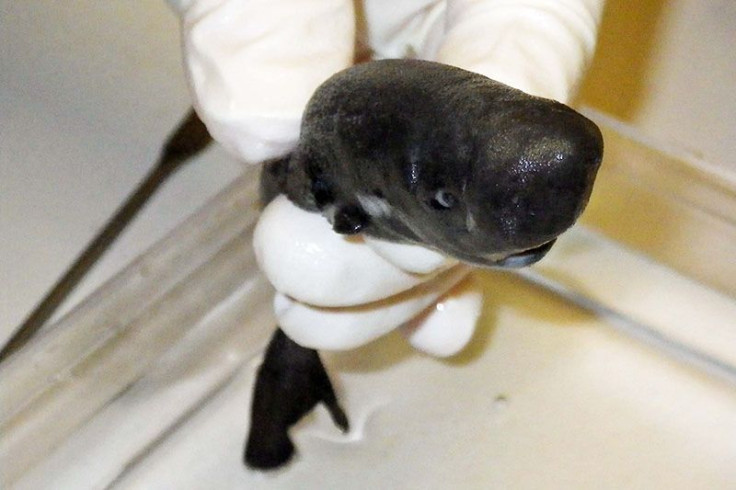Pocket-sized Shark Species Found In Gulf Of Mexico Glows In The Dark

Researchers reported the discovery of a pocket-sized shark in the Gulf of Mexico. Named the American pocket shark, or Mollisquama mississippiensis, the newly identified shark species measures only 5.5 inches and glows in the dark.
It features pouches near its front fins that squirt glowing clouds into the water. Researchers said that it is only the third out of more than 500 species of shark that can squirt luminous liquid.
Mark Grace, of the NMFS Mississippi Laboratories of the National Oceanic and Atmospheric Administration (NOAA), who is part of the team that described the new species said it is the first and only pocket shark reported from the Gulf of Mexico.
Scientists found the male kitefin shark in 2010 while studying sperm whales in the area. It was observed again in 2013.
Researchers said that the specimen is also the second pocket shark to be ever captured or recorded. The first one was found in the east Pacific Ocean in 1979. Researchers said the two pocket sharks belong to separate species and are both exceedingly rare.
“In the history of fisheries science, only two pocket sharks have ever been captured or reported,” Tulane Biodiversity Research Institute director Henry Bart said in a press release. “Both are separate species, each from separate oceans. Both are exceedingly rare.”
The researchers used high resolution CT scans and X-ray images to look at the inside and outside of the Gulf of Mexico specimen to find out how it differs from the Pacific Ocean specimen.
The two species both feature two small pockets, one on each side near the gills, that produce glowing liquid. The two species differ in the number of vertebrae and light-producing photophores that cover a large part of their body.
“The new species, Mollisquama mississippiensis sp. nov., is distinguished from its congener by a putative pit organ located ventrally just posterior of the lower jaw margin center, photophores irregularly distributed along many areas of the body, 16 distinct ventral-abdominal photophore aggregations, and two differences associated with the dentition,” the researchers described the new shark species in Zootaxa.
The glowing fluid from the tiny pocket gland is believed to help the shark attract its prey. The glow could draw potential prey nearby to the shark The tiny predator, essentially hidden, then stealthily attacks.
© Copyright IBTimes 2024. All rights reserved.





















